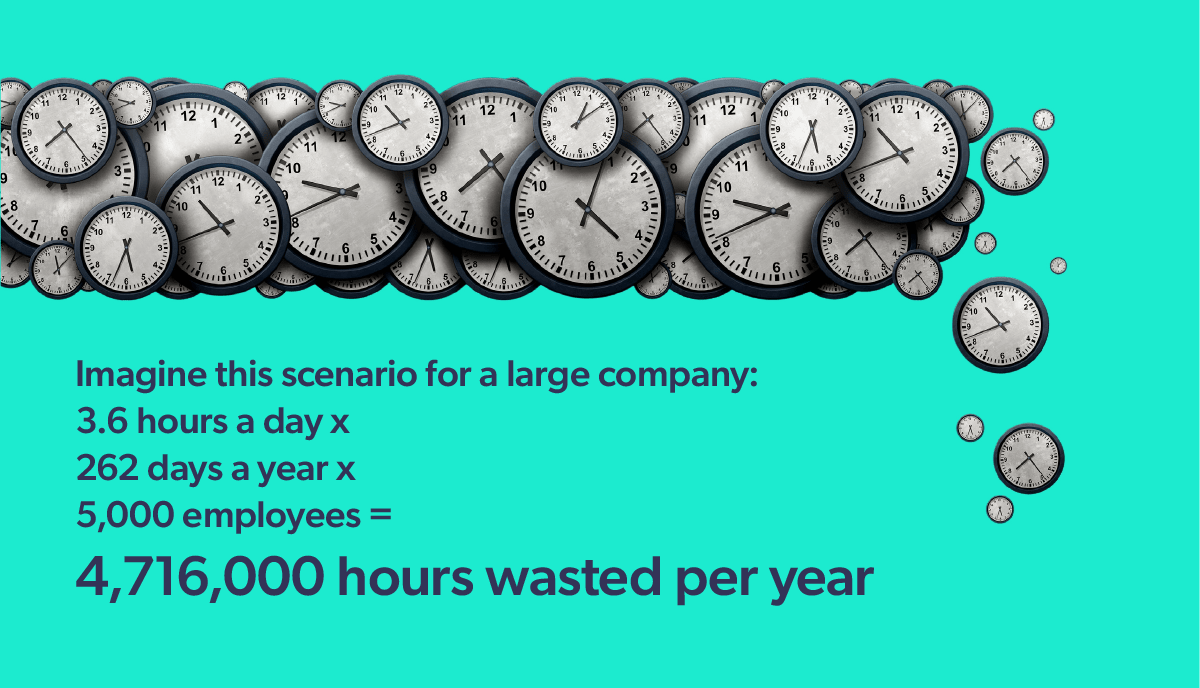Probably one of the hottest topics in business over the last year or so has been the Great Resignation (Reshuffle, Reset, Renegotiation, Rethink, Reimagination, etc.). The Great Re[insert your preference here] is really the great awakening. Shining the spotlight on employees should have happened long, long ago.
But now we’ve got a supposedly new affliction of the employee population, quiet quitting. According to Wikipedia, quiet quitting is defined as:
… an application of work-to-rule, in which employees work within defined work hours and engage in work-related activities solely within those hours. Despite the name, the philosophy of quiet quitting is not connected to quitting a job outright, but rather doing precisely what the job requires. Proponents of quiet quitting also refer to it as acting your wage.
Basically, these employees do what they were hired to do – no more, no less. The reasons for this latest movement revolve around burnout, stress, and taking control of that work-life balance. Some would say this is a new way to express a long-standing concept or phenomenon: employee disengagement. I agree. This is employee disengagement repackaged.

What Is Employee Engagement?
Employee engagement is an outcome of having a great employee experience, which I’ll explain in a moment. Engagement comes from within the employee, and yet the company has a role in it as well. When there’s some confluence of: (1) emotions, commitment, passion, sense of ownership, etc. on the part of the employee about the brand and (2) what the organization does (mission, purpose, brand promise, employee experience, etc.) to facilitate and enhance those emotions or that commitment – then we have employee engagement.
Engaged employees care about their work and the company. They put forth discretionary effort; they go above and beyond because of this two-way relationship.
The problem today seems to lie in the latter half of that definition; companies aren’t providing a great experience for employees, and that’s causing employees to shut down. Why is it that employees have always been an after-thought for most companies? You don’t have a company without employees, so why are they lower on the list of priorities?
Let’s talk about employee experience for a moment. What is that? It’s not perks and games and things like that. There’s so much more to it.
What is Employee Experience?
Employee experience is the sum of all the interactions that an employee has with her employer during the duration of the employment relationship. It includes any way the employee “touches” or interacts with the company and vice versa in the course of doing her job. It also includes the actions and capabilities that enable her to do her job. And, importantly, it includes her feelings, emotions, and perceptions of those interactions and capabilities.
I like to break up those “actions and capabilities that enable her to do her job” into the soft stuff and the hard stuff.
- The soft stuff includes things like: growth and development, feedback and coaching, recognition and appreciation, leadership that cares, an understanding of how your work contributes or impacts the business, and knowing that you’re doing meaningful work that’s valued, empowerment, and more.
- The hard stuff is an important consideration that often gets left out when the experience is designed. It includes the tools, resources, training, and workspace that employees have to do their jobs. And it also includes ensuring that policies aren’t outdated and processes aren’t broken.
This second point about the hard stuff takes us to some research that Coveo recently conducted for a second year in a row titled, Workplace Relevance Report. Last year’s findings highlighted that employees were buried in corporate clutter, i.e., too much irrelevant information impacted their productivity and their proficiency and just created more stress for them. These findings were echoed in the 2022 research.
They found that, on average, employees now spend 3.6 hours daily just looking for information so that they can do their jobs. And they search a variety of sources (four or more data sources or apps every day). They blame bad search technology, knowledge silos, and the lack of relevant information on corporate intranets and other portals. Sadly, they feel like the information that they’re given is irrelevant to their roles, and many don’t even know where to start looking to find what they need. Eighty-one percent said they weren’t able to find what they needed in critical moments (think: trying to help a customer or speaking with a prospect), and a fourth of them said that this happens on a weekly basis. The bottom line implications are brutal!

Why else is all of that important? Thirty-one percent were burned out because of the frustration of not finding what they were looking for. Forty-two percent said it made them feel less confident about the quality of their work. And sixteen percent said it made them want to quit.
If employers don’t give employees the tools and the resources (data, information, etc.) to do the work they were hired to do, it’s so frustrating. It’s a waste of time, hence productivity and efficiency are down. It’s a vicious cycle, too, because employees then don’t feel cared for, appreciated, or understood.
Let’s figure out what’s happening here, focusing specifically on these findings and frustrations. Don’t let another amazing employee become disengaged or leave your company.
The Path Forward
What can you do? Don’t ignore that this is real. It’s beyond time to focus on your employees and the experience they’re having. It’s time to fix it for those who are currently in your employ, which allows them to tell the positive stories that bring in more talent to build on your company mission and vision. Take these ideas and turn them into action.
- Have conversations with your employees. I’m constantly amazed by how many managers and leaders don’t have 1:1s or any kind of stay interview with their employees.
- Ask the right questions. Find out who your employees are. Uncover their needs and desires and career plans. Get to know them on a more-personal level. Ask them what you can do to help them do their jobs. Learn their strengths and weaknesses.
- Involve employees in decisions. Don’t force decisions on them; take a more proactive approach and include them in your information gathering work. Bring them along on the decision; no surprises.
- Do the work to understand employees. Use a variety of approaches to get their feedback. Develop employee personas. Map their journeys. Do something with what you learn.
- In other words, design or redesign the experience to make it easier for them to do their jobs. Again, do something with what you learn from all of your conversations and understanding work.
- Appreciate and recognize employees for a job well done. Appreciation goes a long way these days – and always.
- Communicate openly and candidly. Make it a two-way street. Set expectations accordingly, but provide the tools, resources, and conditions to meet those expectations.
- Evaluate employee resources. What tools and information do they currently have access to? Are they still relevant to the business needs today?
- Involve employees in cataloging information and resources and identifying where they are, what’s missing, and what needs to be updated.
- Involve employees in the decisions on which tools to use. Understand the problems they need to solve and then find the tools and technology to help them, not the other way around.
A Perennial Problem With a New Name
Keep in mind that quiet quitting doesn’t just impact employees; it affects managers and the executive team, as well. These ideas apply to everyone in the organization.
And, finally, check your culture. A toxic culture is filled with disengaged employees who feel burned out and stressed, maybe even simply because the culture is toxic. Go back and revisit your core values – and ensure that both acceptable and unacceptable behaviors have been defined for each value. Then make sure those values are socialized and operationalized. A strong and healthy culture is one that supports employees and allows them to thrive.
Yes, quiet quitting is a hot topic today. But disengagement is not a new topic, and that’s basically what we’re dealing with here. The way to turn the ship around is to ensure that your employees have a great experience – and that starts with conversations, understanding, and making sure they have the tools and resources to do their jobs and to do them well.


